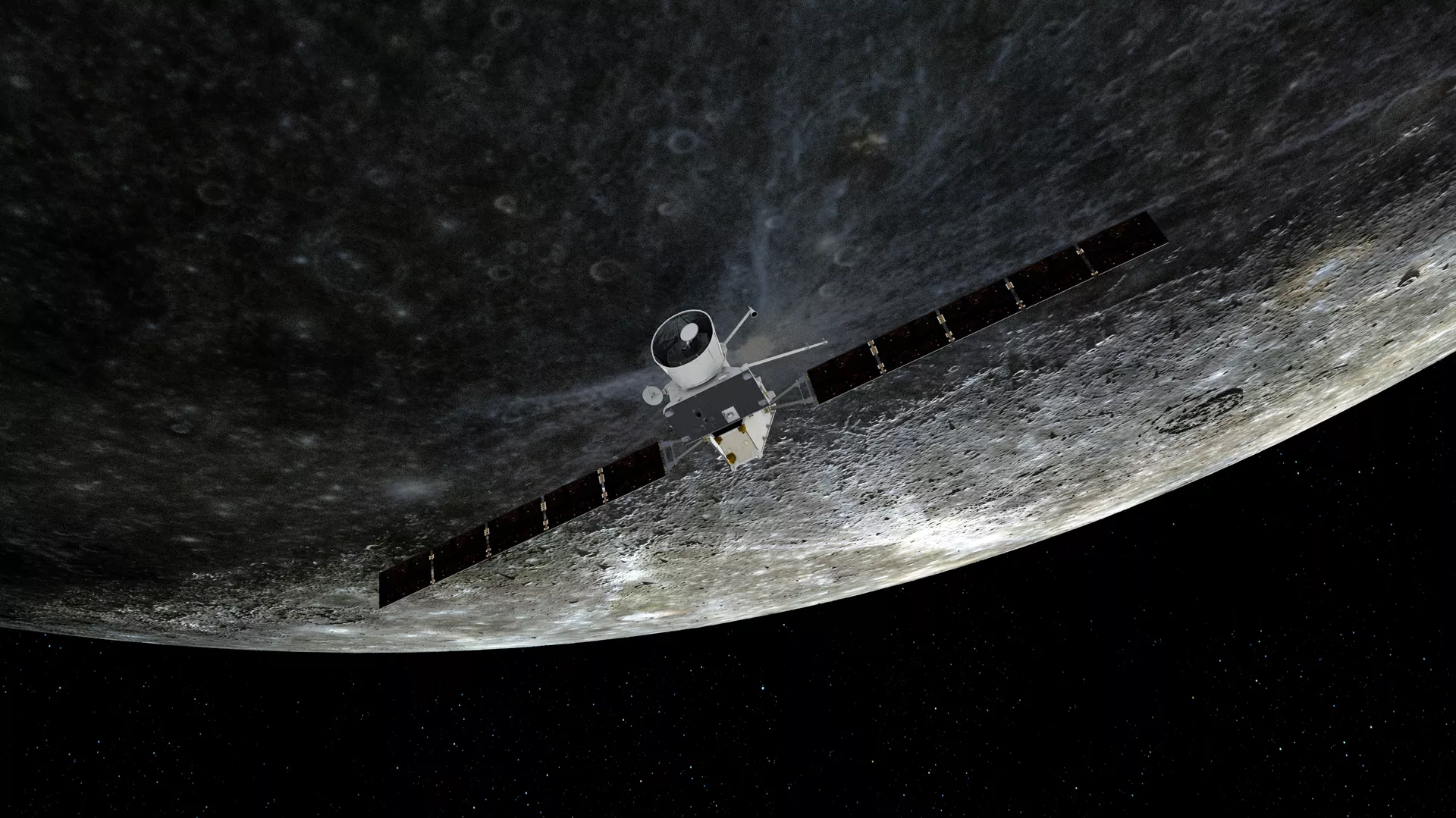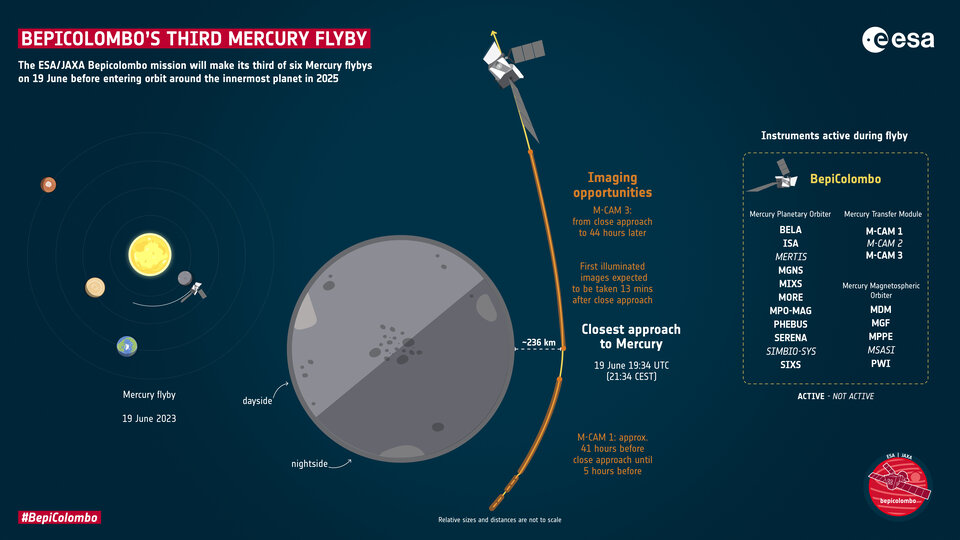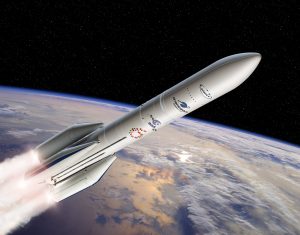Close Encounter: BepiColombo Approaches Mercury in Third Flyby
20th Jun 2023
The BepiColombo mission, a joint endeavour by the European Space Agency (ESA) and the Japan Aerospace Exploration Agency (JAXA), is currently on its way to explore the mysterious planet Mercury. This challenging mission involves a series of flybys and gravity assists to gradually slow down the spacecraft and enable it to enter Mercury’s orbit in late 2025.
On 19th June, BepiColombo conducted its third flyby of Mercury, passing at an incredibly close distance of just 147 miles (236 kilometres) from the planet’s surface. This manoeuvre not only provided an opportunity for snapshots and instrument testing but primarily served to utilize Mercury’s gravity to decelerate the spacecraft.
21th of June. These are the stunning images of Mercury that were taken by BepiColombo during its Mercury flyby just a couple of hours ago.

The Gravity-Assist Flybys
The mission’s ultimate goal is to overcome the Sun’s immense gravitational pull by strategically leveraging the gravity of Earth, Venus, and Mercury itself. This complex dance with planetary forces aims to reduce BepiColombo’s energy and allow it to be captured by Mercury’s orbit. Each flyby helps adjust the spacecraft’s trajectory and further refine its path towards the innermost planet of our solar system.
As BepiColombo approaches Mercury, it faces the challenge of the Sun’s gravitational pull accelerating the spacecraft. To counteract this acceleration, the team meticulously plans and executes precise flybys to adjust the spacecraft’s velocity, direction, and distance from the planet. The previous two flybys have successfully aided in slowing down BepiColombo, with the third flyby further reducing its speed compared to the Sun by 0.5 miles per second (0.8 km/s).
Insights from BepiColombo’s Instrumentation
While flybys allow for fascinating scientific observations and instrument checks, they also pave the way for the main mission once BepiColombo reaches Mercury’s orbit. The spacecraft carries various instruments, including magnetic, plasma, and particle monitoring devices, which will provide valuable data on Mercury’s environment. The Laser Altimeter (BELA) and Mercury Orbiter Radio-science Experiment (MORE) will be activated during this flyby, offering insights into Mercury’s surface shape, gravitational field, and core.
These flybys serve as critical opportunities to test and verify the functionality of the instruments before the main mission. Additionally, the data collected during the flybys can be compared with previous missions, such as NASA’s MESSENGER, to enhance our understanding of Mercury from different vantage points.

Braving the Challenges
The journey to Mercury is no easy feat, as it requires constant braking against the Sun’s gravitational pull. BepiColombo’s route includes several more flybys before it can finally enter Mercury’s orbit in 2025. Along the way, the mission team faces challenges such as interruptions in thruster operations, which necessitate corrective manoeuvres.
Despite the communication delays of more than ten minutes due to the distance between Earth and the spacecraft, the mission continues to adapt and optimize its operations to ensure a successful exploration of Mercury. The BepiColombo project highlights the fusion of scientific knowledge, meticulous planning, and the resilience of space exploration.
As BepiColombo embarks on this unprecedented journey to unlock the secrets of Mercury, scientists eagerly anticipate the wealth of data that will be collected and the groundbreaking discoveries that await us. Stay tuned for updates as we delve deeper into the enigmatic world of our innermost neighbor in the solar system.






Thank you for your comment! It will be visible on the site after moderation.